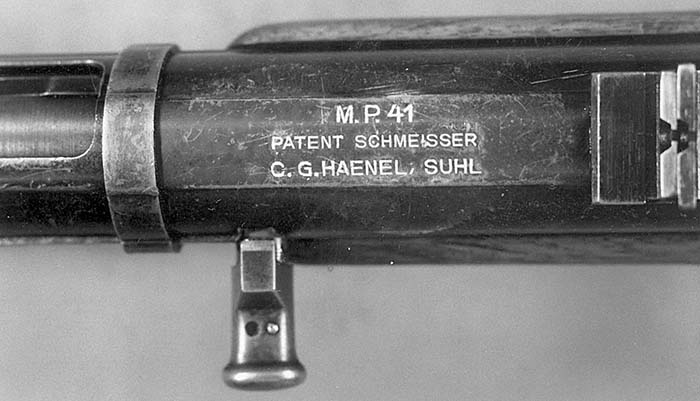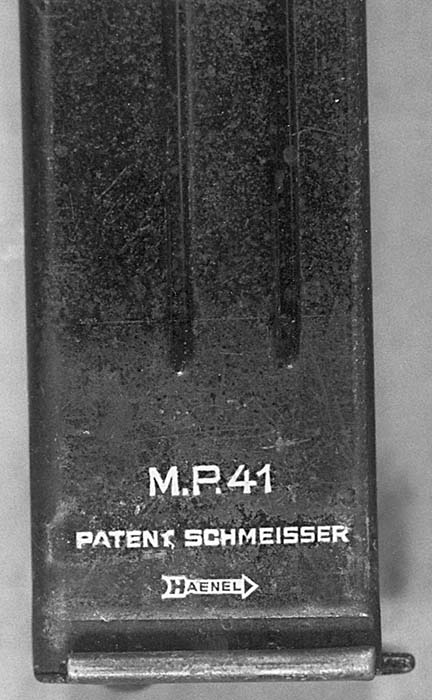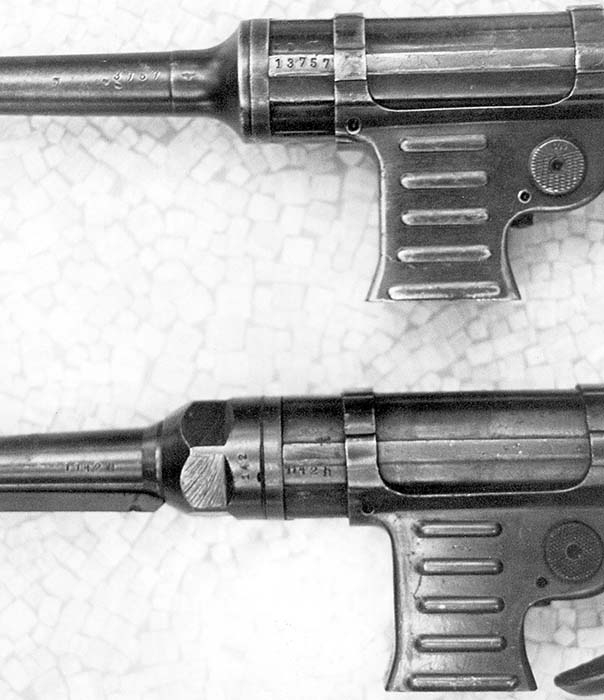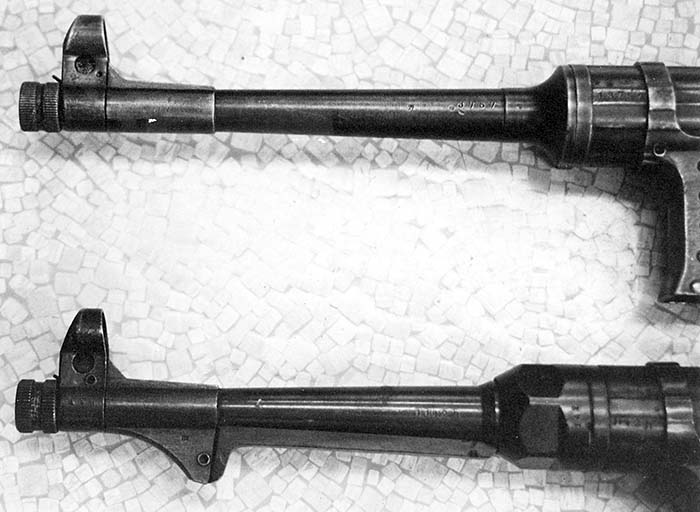By Finn Nielsen
The period between the two World Wars was a very interesting one in terms of submachine gun design.
Beginning with the impossible Italian Villar-Perosa early in the First World War, the submachine gun as a weapon type was refined and improved by the Germans with their introduction of the drum-fed MP 18 late in that conflict. Their use by the so-called ‘Stosstruppen’ was a quantum leap forward in the tactical employment of this radical new weapon.
The Nineteen-Twenties saw the development and use of several other designs such as the Thompson, the Suomi and the MP28 variations of the MP18 WWI predecessor.

Although there were small wars going on in the Twenties, the use of the submachine gun received little coverage. The Marines used the Thompson in Nicaragua and it also saw employment in Ireland of course, but other than that there was little military use of European sub gun designs. That changed in the thirties. The Gran Chaco war in South America virtually decimated Paraguay and Bolivia. Despite League of Nations embargoes modern weapons were obtained. The submachine guns noted were the MP28II and the Austrian MP34. Denmark and Czechoslovakia added to the arsenals by sales of Madsen and Brno light machineguns. This little conflict was merely a sideshow, compared with the Spanish Civil War, which raged from 1936 to 1939. Once again, weapon embargoes were attempted with little success. Here for four years both sides used all the submachine gun designs extant, not to mention new designs created by various Spanish manufacturers during that conflict. Whether or not early Russian designs such as the PPD-34 were used I don’t know. Perusal of photographs of troops of the period hasn’t turned any up. The Russians were ‘generous’ with other equipment, but perhaps they did not have an excess of submachine guns to supply. It should be noted that the entire Spanish gold reserve had been transferred to Russia when the conflict loomed, for ‘safekeeping’. No doubt their control of this hoard helped their ‘generosity’. By the time this nasty conflict was over, there was little of the reserves left.

One thing which all these early subs had in common was their quality. Receivers were machined from the solid, furniture, which was usually walnut and the finish of the metal surfaces would rival some of todays sporting rifles.
The stocks were of the rifle type, sights were graduated to impossible distances for the cartridges they were chambered for. Most were fairly heavy, ten pounds loaded was not unusual.
In 1938 that pattern began to be broken in Germany. The introduction of the MP38 by the ERMA firm changed the traditional manufacturing processes. Although the MP38 still had a fairly heavy machined receiver, albeit with lightning cuts, it now introduced synthetics into firearms manufacture for the body of the weapon. The stock now folded making it compact and handy, just the size to fit in a panzer or to be carried by a paratrooper.
The revolutionary weapon was made for over two years with little modification. Advances in metal stamping techniques resulted in the introduction of the lighter and cheaper MP40.

At that point in time it would not be inaccurate to say that Germany was the leader in submachine gun design in the world.
It was now 1941 and the Second World War had been raging in Europe for two years. That year brought the introduction by the Haenel firm of the MP41 submachine gun. There was absolutely nothing new or even unique about this weapon. To put it simply, at first light it is merely a marriage of the MP40 and the MP28II. This combination can only be called interesting when one considers that at one fell swoop many of the nice things about the new MP40 had been cancelled out. We are back to a Thirties SMG. The ‘new’ weapon still took MP40 magazines although they were marked ‘MP41’. The premise that conservative elements in the military may have been interested in it was not an unreasonable one, but such was not to be. Less than 5000 were reputed to have been made with the output going to lesser SS formations and the Police units in the field.
Unfortunately, there are no issue marks on it, which might pin it down to a specific unit or formation. Closer comparison of my specimen with an MP40 does reveal a number of differences between the two.

They are as follows:
1. The method of attaching the barrels to the receivers differ. The MP40 has the familiar outside nut, the MP41 is inside.
2. There is no ‘rest’ bar on the MP41 barrel.
3. The MP41 is selective fire in the same manner as the MP28II.
4. The MP41 wooden stock is its most salient recognition feature couple with the MP40 magazine housing.
5. The take-down is different. The cap at the end of the MP41 receiver unlocks and can be removed to take out the bolt and return spring. That’s about all the disassembly required.
Fifty odd years later we can only speculate as to what exactly possessed Haenel to introduce the weapon at a time when such a fine weapon as the MP40 was already accepted by the troops and used relatively widely even at this early date. Still, it’s not a ‘bad’ submachine gun, there certainly isn’t the ‘wobble’ you get with many of the stocks of MP40’s, but you have lost the compactness of that design.
For more information on the MP41 submachinegun, read The MP40 by Frank Iannamico, available from SAR.- Dan
| This article first appeared in Small Arms Review V3N2 (November 1999) |











